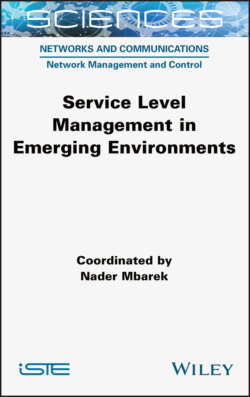Читать книгу Service Level Management in Emerging Environments - Nader Mbarek - Страница 38
1.4.3.4. Research projects
ОглавлениеSeveral research projects have been carried out on trust and privacy in the IoT. For example, there is the report from the AIOTI (Alliance of Internet of Things Innovation) Workshop on Security and Privacy in IoT, which outlines the key security and privacy requirements for different application fields of the IoT. These requirements can be summarized as the user being able to monitor the data, the transparency and control of the user interface, default encryption, data insulation, continuous monitoring, etc. Further, this report highlights the importance of applying additional mechanisms such as minimizing data collection and the need for accountability in the misuse of collected personal data (AIOTI 2017).
There is also TCG (Trusted Computing Group 2018), which is a group formed by AMD, Hewlett-Packard, IBM, Intel and Microsoft, which aims to implement the concepts of “Trusted Computing” in personal computers. In this context and through the report (Hanna 2015), the TCG’s IoT subgroup defined a trust system as a system designed to be predictable even under stress. This same report specifies that to build a trusted IoT system, it is necessary to set up a hardware Root of Trust (RoT), use encryption during storage, add automation of security and protect legacy systems. The RoT can generate random numbers, store and use long-term keys and verify the integrity of the system in order to reduce risks and provide the system with strong protection. In this context, the Trusted Platform Module (TPM) is an open and interoperable ISO/IEC standard (2015b) that can specify a hardware RoT. The technical specification of this standard has been written by the TCG group. TPM provides security features such as authentication, encryption and attestation (guaranteeing the security of software or hardware to a third party). At present, TPM is integrated into billions of connected objects. Hardware Storage Encryption is a component that provides the encryption service. Hardware Storage Encryption uses Self-Encrypting Drive to provide continuous encryption with no impact on system performance. This component makes it possible to protect against physical attacks, loss or theft by instantly erasing data and cipher suites. Security automation makes it possible to automatically process tasks related to security operations. This automation is brought in for all phases of system security (incident detection, incident analysis, incident response) (Hanna 2015). This security automation is standardized across different standards such as IEEE 802.1AR (IEEE Standards Association 2018) and TAXII (Trusted Automated eXchange of Indicator Information) (Davidson and Schmidt 2014).
Finally, the research work carried out by Dong et al. (2011) presents a trust management model in the IoT called TRM-IoT. This model helps defend against malicious node attacks by identifying them and taking the appropriate decisions. To perform this task, it is necessary to measure the trust of objects and this is done by taking into account complex aspects such as credibility assessment of nodes, for example. Fuzzy logic theory is then used to determine trust by taking into account different input parameters: the end-to-end packet transmission ratio, energy consumption and the packet delivery ratio.
